How to pretend you've seen the 30 best movies ever made
Vertigo (1958)
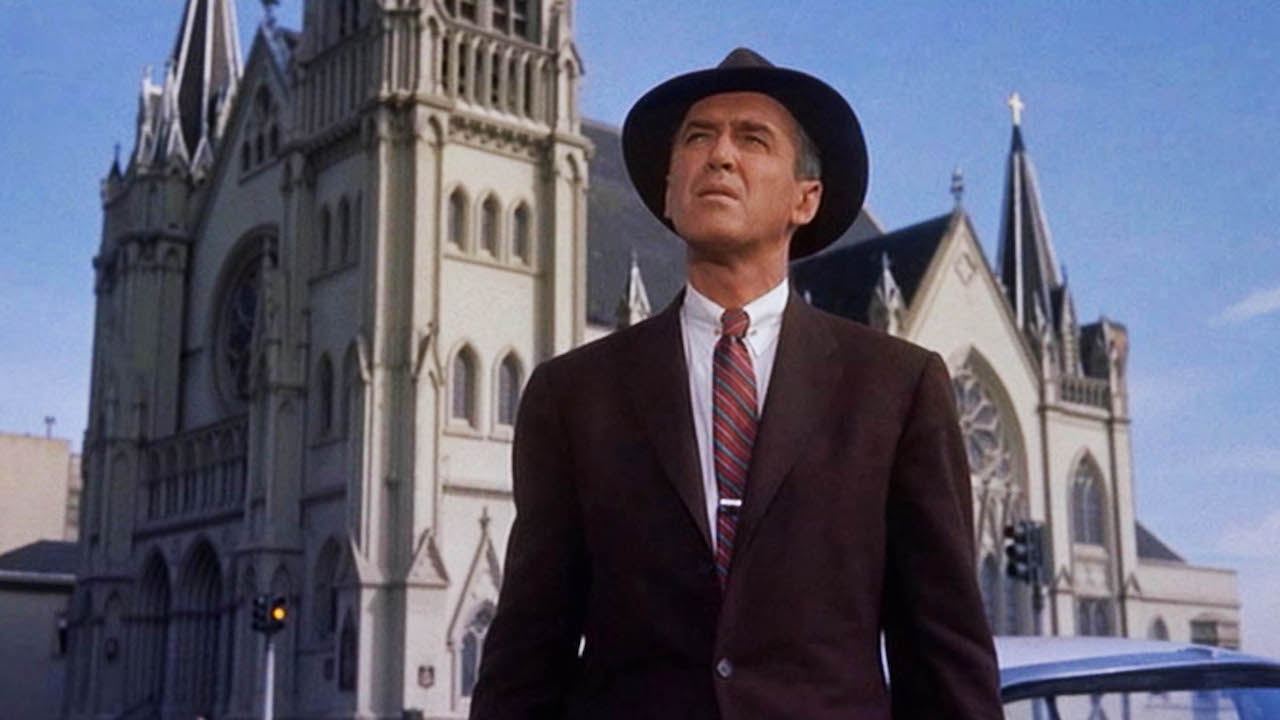
Scottie Ferguson (Jimmy Stewart) is an ex-detective hired to investigate the strange behaviour of his friend’s wife, Madeleine (Kim Novak). Scottie becomes obsessed with her, but can’t prevent her from committing suicide by jumping from a tower. Or does she? Months later Scottie sees a dead ringer for Madeleine walking into a department store, he follows her, and… the story really starts to unravel and his obsession reaches new heights. While Madeleine’s first death is staged, her ironic final demise at the end of the movie - which mirrors the staged version - is very, very real.
Key things to mention: Saul Bass’ soundtrack is amazing, isn’t it? Weird to see Jimmy Stewart playing a ‘bad guy’ isn’t it? Although is he really bad, or just damaged from the way he’s manipulated? Did you see the Hitchcock cameo outside the department store?
Memorable quote: “Did he train you? Did he rehearse you? Did he tell you exactly what to do, what to say? You were a very apt pupil too, weren't you?”
Andy Hartup
Singin’ in the Rain (1952)
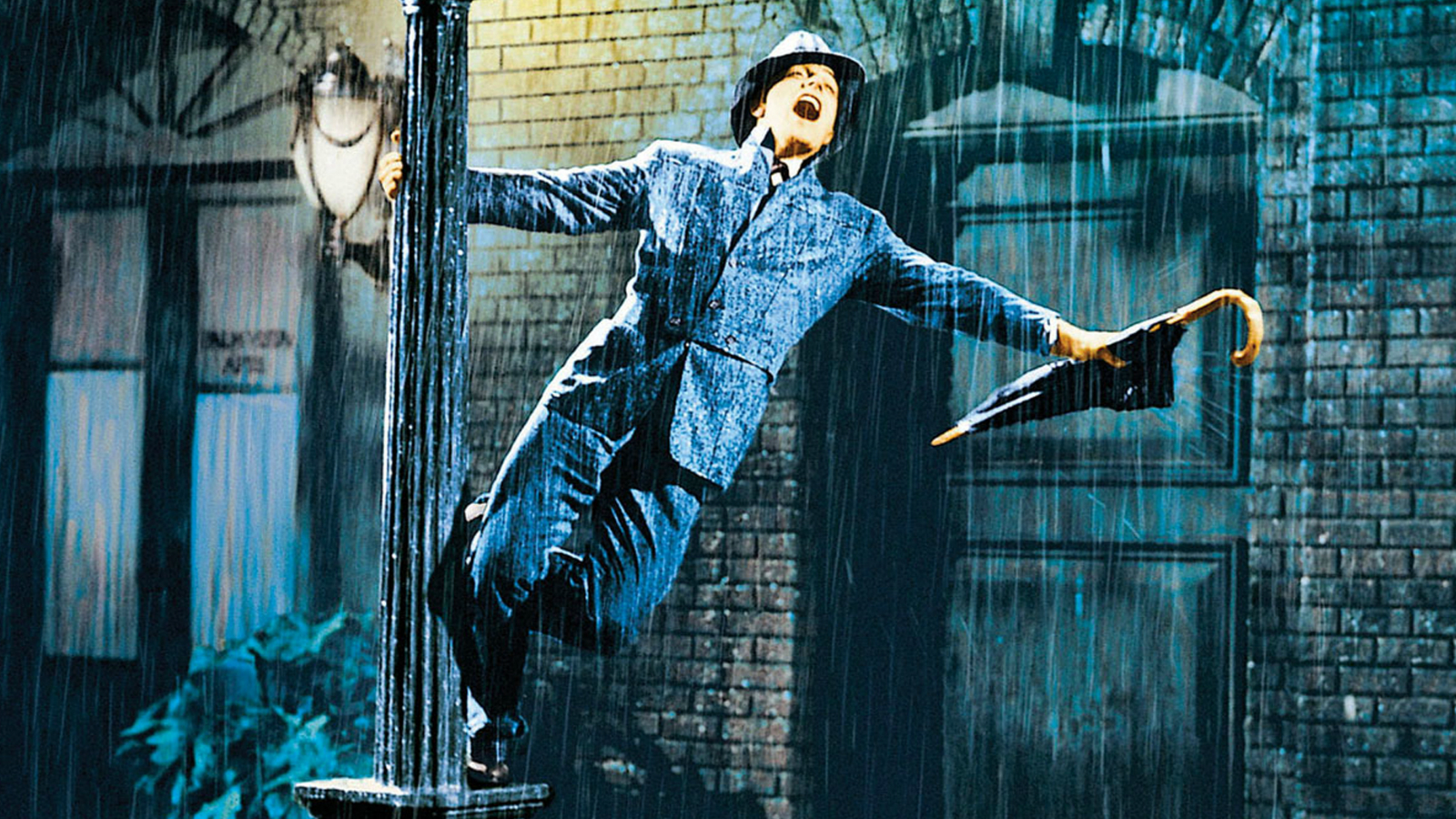
Don Lockwood (Gene Kelly) is a huge silent film star in the late 1920’s, just as studios are beginning to adopt the technology for sound. But his on-screen partner Lina Lamont (Jean Hagen) has a voice like nails on a chalkboard, putting their first big talkie at risk of being a massive flop. Can Don, his best friend Cosmo (Donald O’Connor) and his new lady love Kathy (Debbie Reynolds) save the picture? Of course they can, singing and dancing and wise-cracking all the way to a happy ending. Having Kathy dub over Lina’s voice in their film The Dancing Cavalier, it quickly becomes a smash hit and fans demand to hear Lina sing live on stage. After Lina threatens to sue if Kathy gets credited in the film, Don and Cosmo agree to have her sing behind a curtain while Lina mimes onstage. Midway through the performance the curtain lifts, revealing Kathy. Lina runs off in shame, and Kathy is credited as being the real star.
Key things to mention: It’s all about the Singin’ in the Rain’s dance numbers. Was your favorite Kelly and O’Connor toe-tapping to a tongue twister in ‘Moses Supposes’? Maybe it was the slapstick mayhem of O’Connor’s ‘Make ‘Em Laugh’ solo or the titular ‘Singin’ In The Rain’ by Kelly? Or are you partial to ‘Broadway Melody’, the massive third act ballet where Kelly duets with the incomparable Cyd Charisse?
Memorable quote: “Am I dumb or something?” (Ideally delivered in an absurdly nasal high-pitched voice.)
Anna Washenko
The Shawshank Redemption (1994)
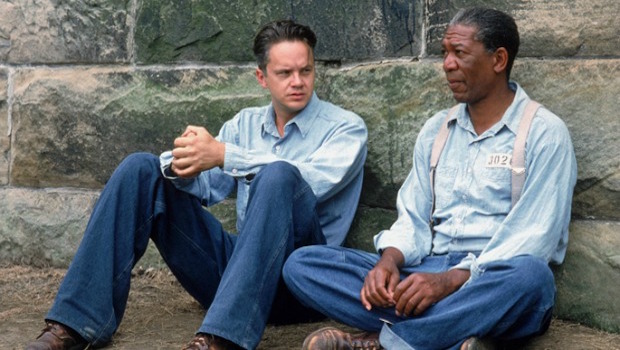
Andy Dufresne (Tim Robbins) is sent to Shawshank prison for the murder of his wife and her lover. He’s innocent but the evidence against him is so strong that he spends many years locked up, ultimately making a life for himself behind bars and striking up a close friendship with fellow inmate Red (Morgan Freeman). He becomes an accountant for the Warden and his guards, helping them evade tax amongst other (illegal) things, and even sets up a prison library for the inmates. Then one day, he breaks out through a tunnel he’s dug from his cell to a sewage pipe which he crawls through to escape. The movie ends with Andy relaxing on a beach fixing up a boat to take out to sea.
Sign up for the Total Film Newsletter
Bringing all the latest movie news, features, and reviews to your inbox
Key things to mention: During The Shawshank Redemption, one of Andy’s crew, Brooks, gets released but after spending most of his adult life in prison he’s ‘institutionalised’ and eventually kills himself. Andy used a very small rock shaping tool to dig his escape tunnel, which is why it took so long. Once on the outside, he tips off the Feds about what’s been happening at Shawshank and the Warden kills himself before he can be arrested. Once Red is released he follows Andy hints about how to find him and makes it to the beach to be reunited with his friend.
Memorable quote: “I guess it comes down a simple choice: Get busy living, or get busy dying.”
Lauren O’Callaghan
The Godfather (1972)
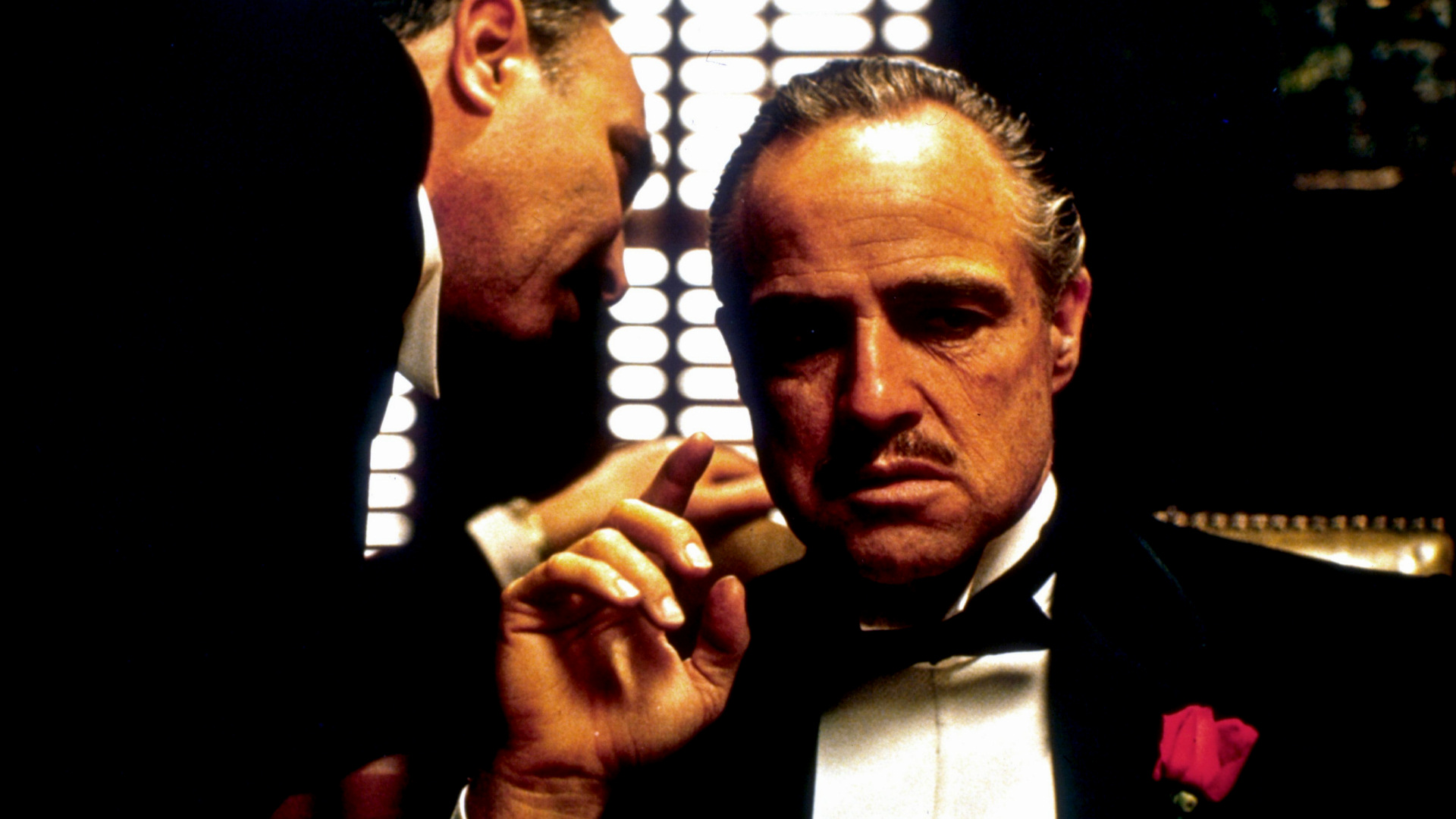
Deep breath… It’s the wedding of mobster Don Vito Corleone’s (Marlon Brando) daughter, and his youngest son Michael (Al Pachino) is finally back from the war. To get a singer a role in a movie, Vito’s adopted son Tom (Robert Duvall) attempts to convince the director it’s a good idea - when that fails, he puts the head of the director’s prize stallion in his bed. Vito refuses a deal with the Tattaglia family, and a feud starts. Lots of people die on both sides, and an attempt is made on the hospitalised Vito’s life after he’s gunned down in the street and survives. A full war between the five mobster families starts, and Michael flees to Sicily to safety. Vito’s eldest son Sonny (James Caan) gets gunned down as he remains in New York while on his way to prevent his brother-in-law from abusing his sister. Grieving over Sonny’s death, Vito tries to end the feud by withdrawing opposition to the Tattaglia family’s heroin business and forgoing avenging his son’s death. Michael returns home from Sicily, marries his girlfriend Kay (Diane Keaton), and enters the family business. Michael takes over most of Vito’s responsibilities and moves to make the business legitimate. He relocates Tom to Las Vegas to keep him safe, at the same time trying to buy out their partner Greene’s (Alex Rocco) stake in the family casino business there. Turns out Greene has convinced Vito’s middle child Fredo (John Cazale) that the Corleone family are becoming weak.
Vito has a heart attack and dies. At the funeral Michael is asked to see one of the representatives of the enemy families, but he suspects betrayal is on the cards. While he’s standing at the altar about to christen his child, Corleone assassins murder the heads of the other New York families and Greene. Michael denies having ordered the killings to Kay, but she hears him being called ‘Don Corleone’, confirming her fears that he is now head of the crime family. And… relax.
Key things to mention: Sonny getting ripped up by bullets; the fact that the horse head put in Woltz’s bed was real even though the actor had only rehearsed with a fake one - so his screams are very, very genuine. Plus Marlon Brando refused the Best Actor award at the Academy Awards, instead sending American Indian Rights activist Sacheen Littlefeather to the podium as a protest against the depiction of American Indians by Hollywood and television.
Memorable quote: “I’m going to make him an offer he can’t refuse.”
Zoe Delahunty-Light
12 Angry Men (1957)
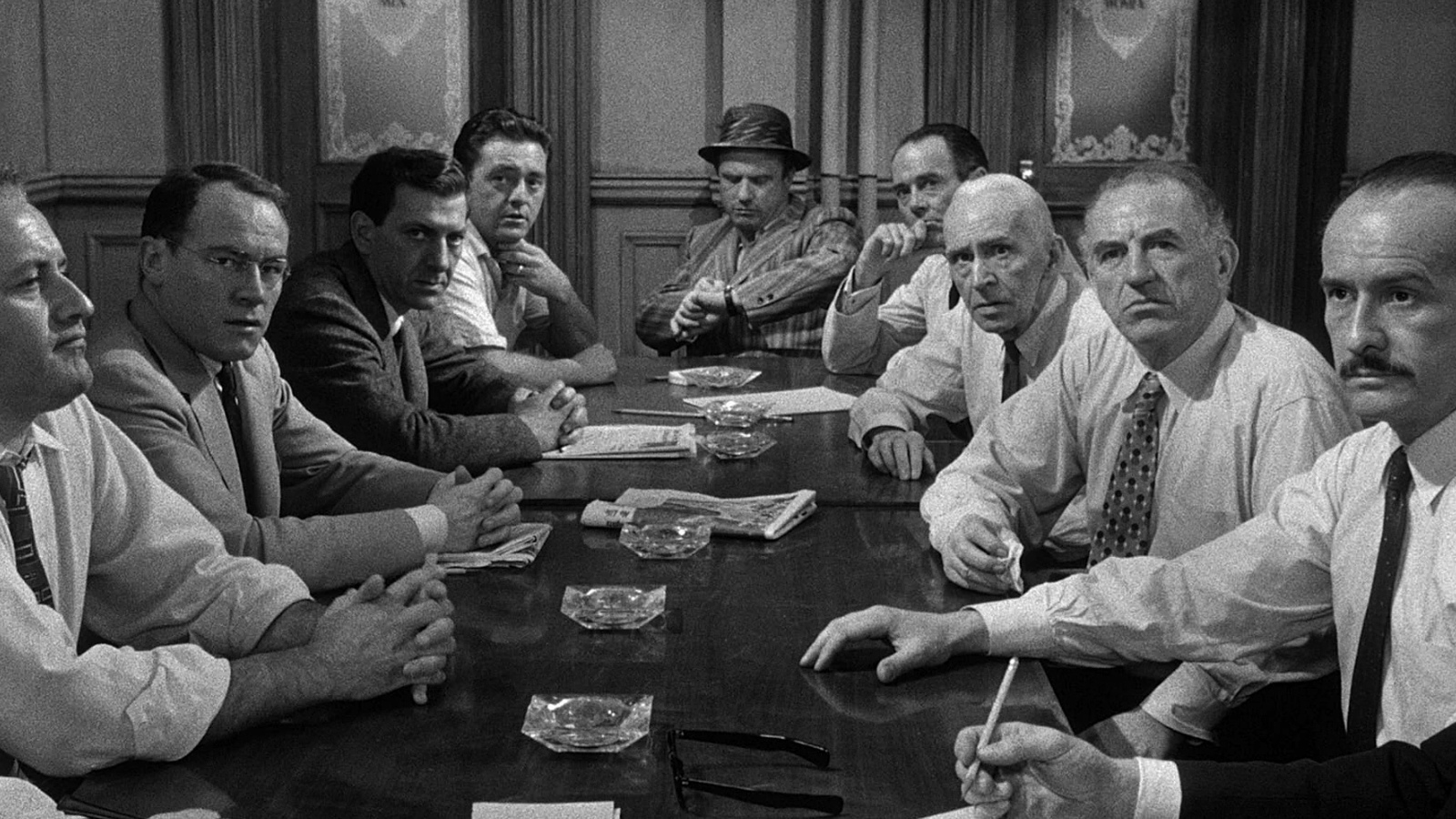
In an apparently cut-and-dry murder case, one brave juror suggests they should deliberate before coming to a verdict. On examination, his fellow jurors gradually change their minds about the case, or reveal misguided, personal reasons why they were so quick to judge the accused. More of a juryroom drama than courtroom, 12 Angry Men is a humane examination of judgement and assumption, which feature one of cinema’s greatest good guys - the angelic Juror 8, cast to perfection and perfectly played by Henry Fonda. In the end all the votes are unanimously changed to ‘not guilty’, either by logical argument or revealing the prejudices of each Juror. It’s an absorbing, hopeful fable, which shows that one bold, dissenting voice is enough to change opinion and save a life. It’s full of brilliantly observed characters who feel as recognisable today as they did in 1957.
Key things to mention: In case you were in any doubt who the good guy is, Juror 8 is the only member wearing a white jacket. Also, none of the characters are named during the film. Instead, they’re referred to only by their numbers. At the end of the film, Jurors 8 and 9 reveal their real names to each other.
Memorable quote: “You don't really mean you'll kill me, do you?”
Matt Elliott
Schindler's List (1993)
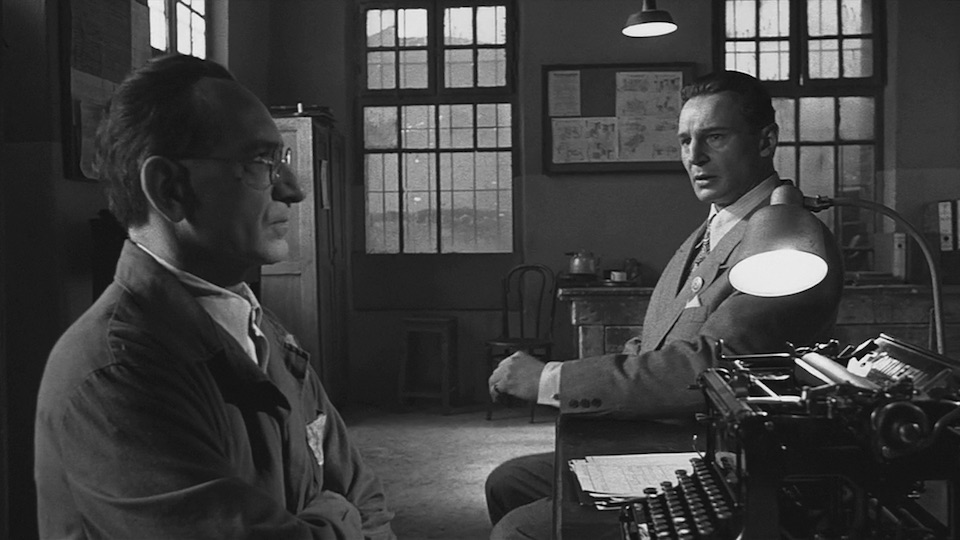
Steven Spielberg's Best Picture-winning black-and-white World War 2 film follows German businessman Oskar Schindler (Liam Neeson) as he uses the war and surrounding chaos to build his fortune. He hires Jewish official Itzhak Stern (Ben Kingsley), specifically using Jewish workers because Schindler can pay them less. After a massacre at the ghetto where many of his workers live, he begins to care less about making money and instead focuses on saving as many people as he can. He creates a munitions factory in his hometown and writes up a list of people he hopes to transfer in order to keep them out of the Auschwitz concentration camp. He spends the rest of his fortune bribing officials and keeping his factory from producing a single usable weapon, running out of money as the war ends. He flees Germany knowing that the invading Russians will kill him if he stays, and his workers give him a signed statement of his generosity and humanitarian efforts, hoping that will save him when he turns himself into the Americans. The film ends with a scene - in color - showing the real Holocaust survivors walking into a graveyard with the actors who portrayed them, along with Liam Neeson, who places a pair of roses on Schindler's grave.
Key things to mention: Steven Spielberg declined a salary for making the film, calling it "blood money". He shot the film primarily in black-and-white, with Spielberg saying: "The Holocaust was life without light. For me the symbol of life is color. That's why a film about the Holocaust has to be in black-and-white." There are a few moments of color in the film: the scene at the end at Schindler's grave, which is entirely in color, and a young girl who wears a red coat surrounded by black-and-white, who is seen twice. The first is during the massacre in the ghetto, and is the moment where Schindler decides to protect his workers; the other is later in the film, where Schindler sees a dead body wearing the same red coat. And you can admit you cried during the scene near the end where Schindler points to all of the luxuries he owns - his car, his gold SS pin - and realizes how many more lives he could have saved if he used them as bribes.
Memorable quote: "It's Hebrew, it's from the Talmud. It says, 'Whoever saves one life, saves the world entire.'"
David Roberts
The Good, the Bad and the Ugly (1966)
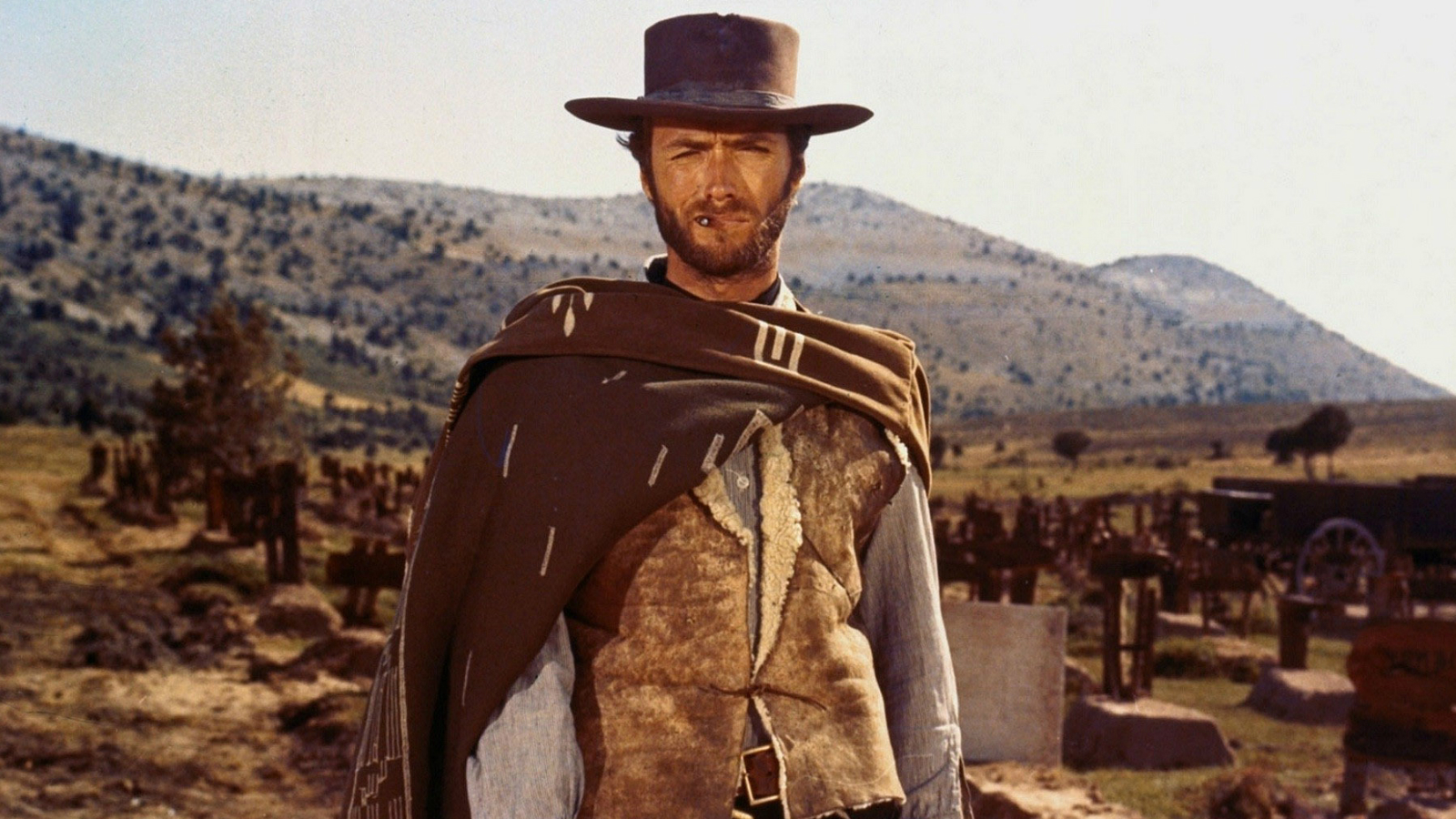
The conclusion of Sergio Leone’s spaghetti Western trilogy (so called because it was filmed in Italy), The Good, The Bad, and The Ugly sees the formidable trio of Clint Eastwood, Lee Van Cleef and Eli Wallach sharing screen-time. It’s a three-way scrap for a bag of Confederate gold - which is buried somewhere in a grave - between the movie’s cast who roughly map to the film’s title (Eastwood / Van Cleef / Wallach respectively), and the trio are forced to form an uneasy alliance to get it. After escaping the attentions of the army, and a wonderfully-forced sharing of information, the iconic final stand-off between the cast is some of Leone’s best movie-making, as he ratchets up the tension through long, lingering shots and lashings of Ennio Moriccone’s now famous soundtrack. What’s more everyone sort of gets what they deserve, but you’re left guessing about the outcome to the bitter end.
Key things to mention: Oddly, Lee Van Cleef plays ‘The Bad’ in this movie after playing a good guy alongside Eastwood in For A Few Dollars More. The shooting of the hangman’s noose is one of the most iconic scenes in all Westerns, and it’s an anti-war film, yeah. Leone actually removed dialogue from the movie to make his shoot-outs more intense.
Memorable quote: “You see, in this world there's two kinds of people, my friend: Those with loaded guns and those who dig. You dig.”
Andy Hartup
Fight Club (1999)
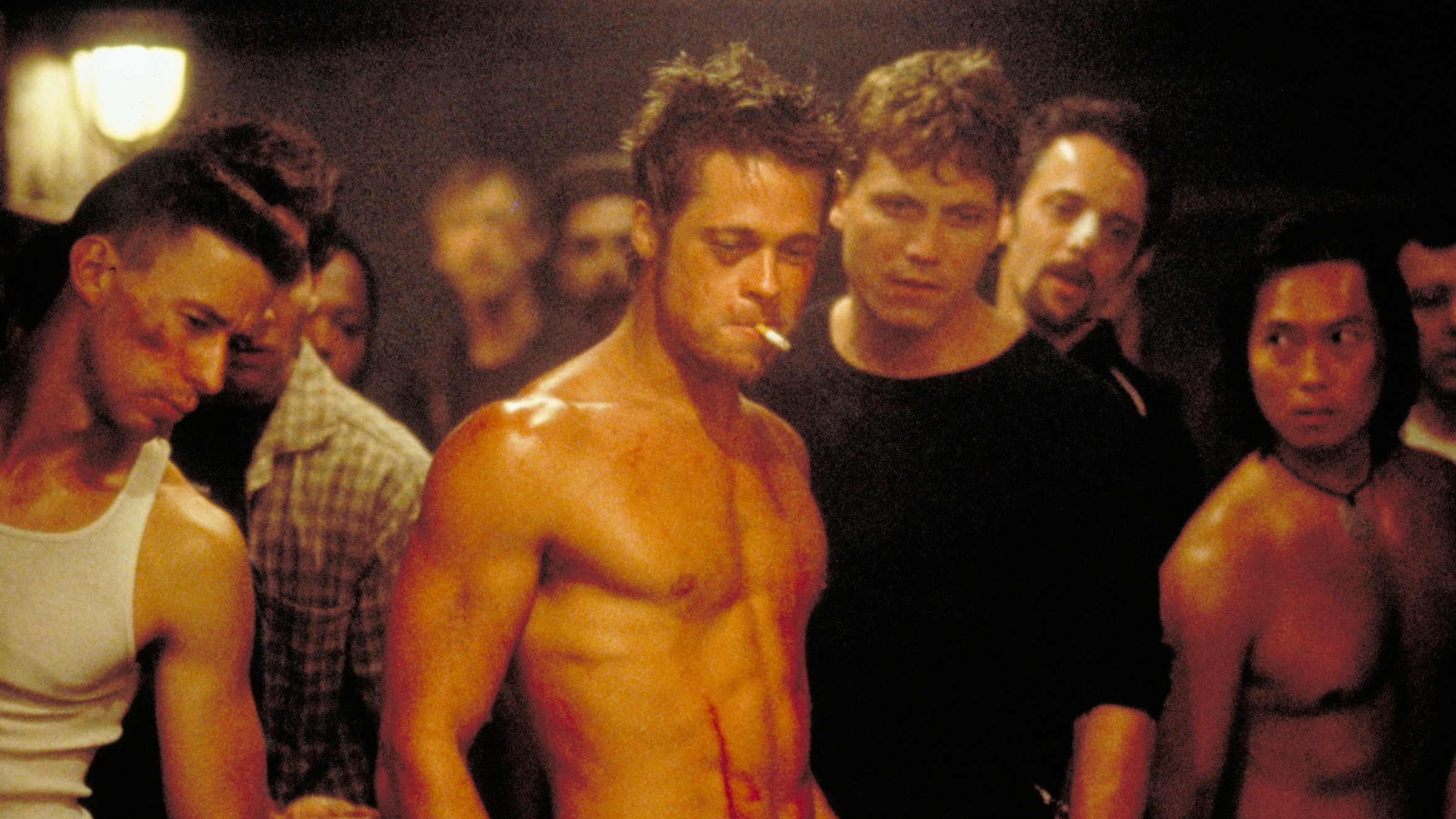
The Narrator (Edward Norton) is a man who sees no future ahead of him and is suffering with insomnia. One night, he meets Tyler Durden (Brad Pitt). The men strike up a fast friendship, commiserating over their anti-capitalist and anti-materialism views. In an attempt to bring some excitement into the Narrator's life, Tyler goads him into engaging in a fistfight. The Narrator moves in with Tyler and they continue their bouts. Each time they draw a larger and larger crowd of spectators and participants, with the fights eventually organizing into the titular Fight Club. The club continues to grow, with members moving into the house and working secretly through the night.
When one member is killed by police, the Narrator seeks to confront Tyler and shut the organization down. During his investigation, the Narrator discovers that Tyler is a split personality of his own mind, a projection of everything he wishes he could be. "Tyler" plans to erase debt by destroying several buildings containing credit card histories, and the Narrator - still envisioning Tyler as a separate entity - fights him for control of their shared body. The Narrator wins by shooting himself through the cheek, but Tyler's plan still unfolds. The Narrator holds hands with a woman he has pined for as the buildings crumble.
Key things to mention: The biggest thing to remember is that Fight Club actually has very little to do with fighting, and much more to do with anarchist views and conspiracy theories. That and the whole ‘The Narrator is Tyler’ twist. The Narrator often refers to himself in a sort of poetic, disassociated third-person, saying things like "I am Jack's inflamed sense of rejection" and "I am Jack's complete lack of surprise." Despite this, he is never properly named, hence being referred to as ‘The Narrator’.
Memorable quote: "The first rule of Fight Club is: you do not talk about Fight Club. The second rule of Fight Club is: you do NOT. TALK. ABOUT. FIGHT CLUB."
Sam Prell
Forrest Gump (1994)
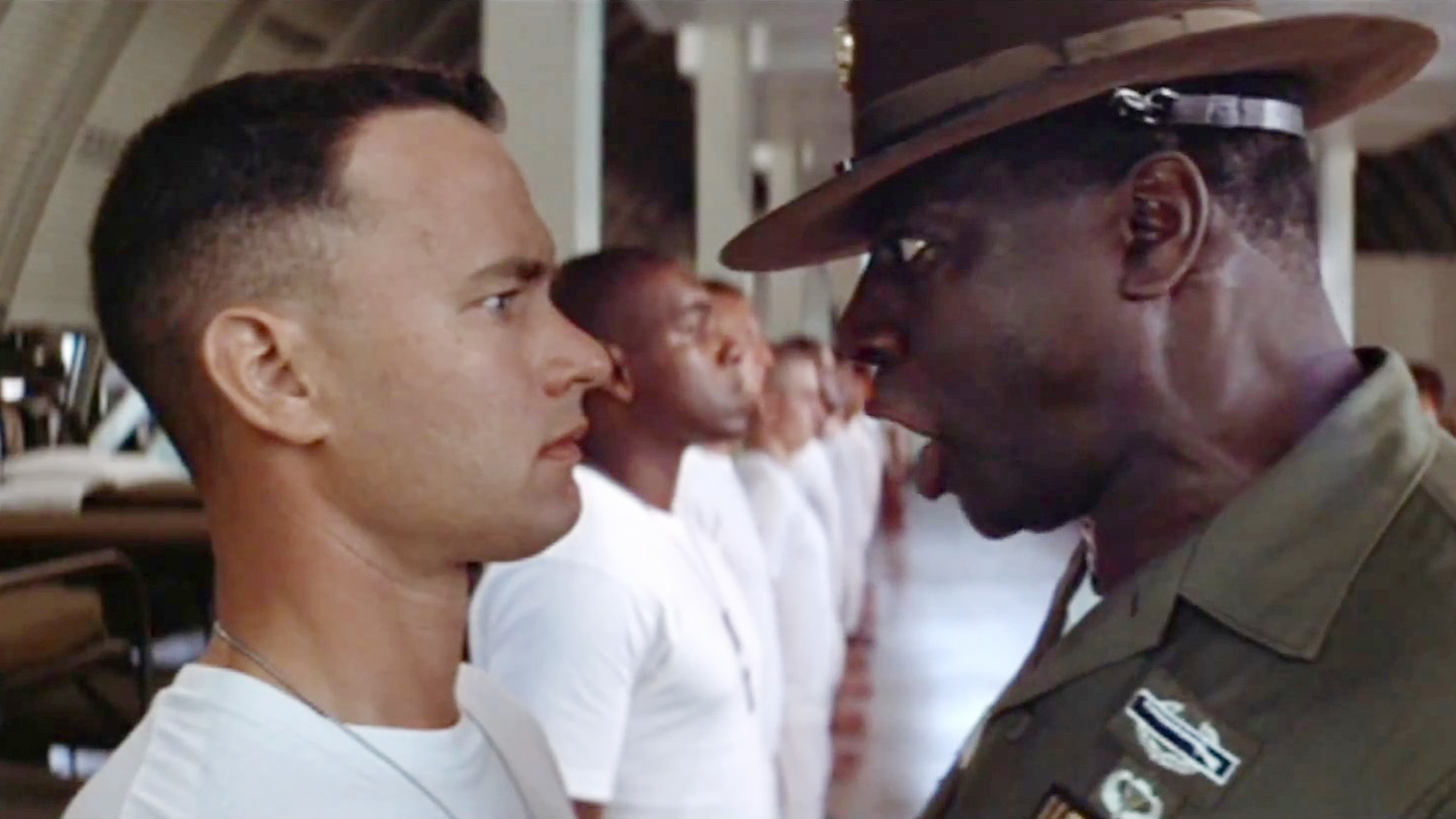
Forrest Gump (Tom Hanks) is not a particularly intelligent person but he does lead an extraordinary life. Something which he recounts to numerous people while sitting at a bus station waiting to go to meet his childhood friend Jenny. He tells anyone who’ll listen about his upbringing - he used to have a problem with his legs which meant he had to wear braces but one day he starts running and they just fall off - and the rest of his life, from his time in the Vietnam War to setting up a shrimp business. He eventually goes to meet Jenny and finds out that they have a son together, also called Forrest. Jenny is very sick so Forrest fulfils his lifelong dream of marrying her and they all return to home to Alabama where she lives out the rest of her short life. Forrest is left to raise their son, something he’s very devoted to.
Key things to mention: Forrest meets Elvis Presley, President John F. Kennedy, President Lyndon B. Johnson, and President Nixon. He planned to set up the shrimp company with his army buddy, Bubba, who dies so he gives half of the money he makes from the business to Bubba’s family. His former superior officer (now in a wheelchair, drunk and bitter) becomes his business partner and invests the rest in Apple, setting them up for life. At various points in his life he reconnects with Jenny and after one such encounter they have sex but she doesn’t stay. Frustrated Forrest runs from coast-to-coast for three and half years, gaining much media attention.
Memorable quote: “Mama always said, life was like a box of chocolates. You never know what you're gonna get.”
Lauren O’Callaghan
Inception (2010)
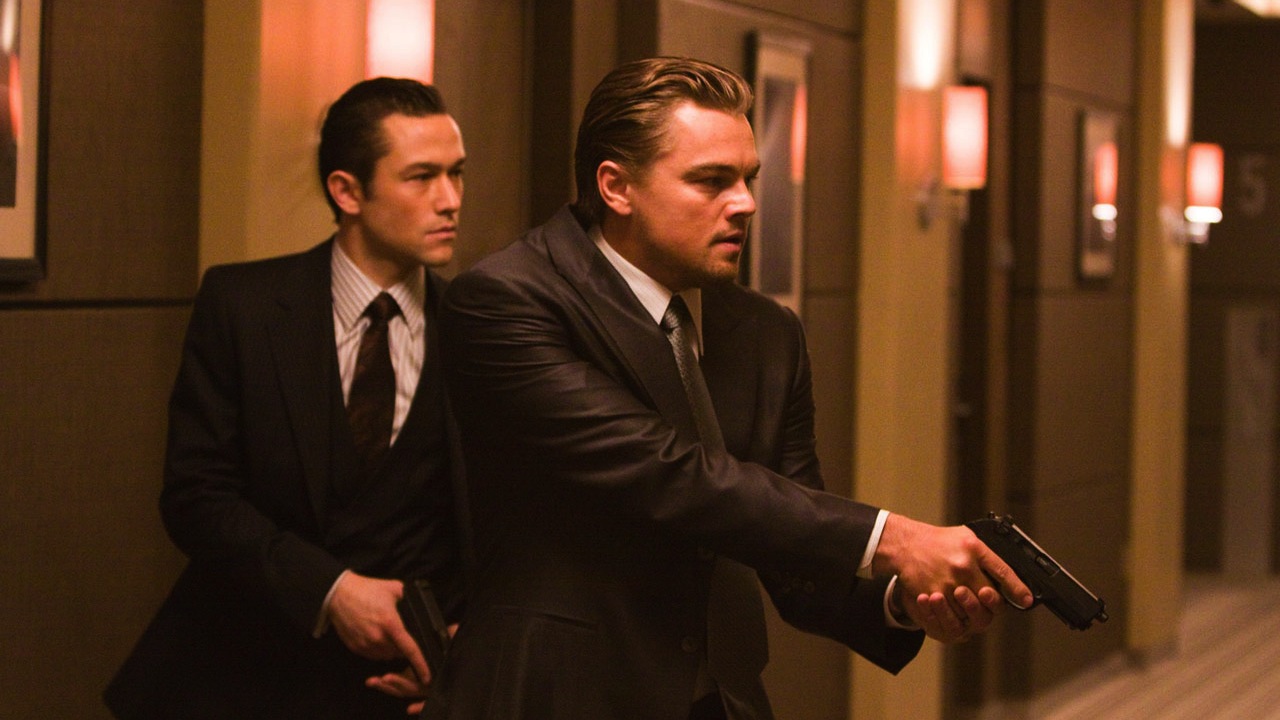
Dom Cobb (Leonardo DiCaprio) and his crew are a set of very special thieves who go inside people’s subconscious and steal information while they dream, but when a potential client asks them to implant an idea in someone’s mind rather than steal one - something which has never been done before - Dom agrees on the understanding that the client will then make it possible for him to go back home to his children. As they go deeper and deeper into the mind of Robert Fischer (Cillian Murphy) to try and convince him it’s his idea to sell his father’s company, they risk being trapped forever. Only their totems can tell them whether they’re dreaming or in the real world (see below). Oh, and it doesn’t help that a dream version of Cobb’s dead wife, Mal, (Marion Cotillard) is trying to screw them at every turn. After a dangerous and near-fatal but successful inception, Cobb returns home… or does he? The director Christopher Nolan leaves the question hanging about whether he’s still dreaming, as he sets his totem spinning but walks away without caring about the answer.
Key things to mention: Implanting an idea in someone’s mind is called Inception. There are multiple levels to the dream world and the further you go down the slower time gets. You can wake yourself up by ‘killing yourself’ in the dream. In the dream world you can change and build almost anything you want (it’s a bit like being Neo in the Matrix). It’s very difficult to tell the difference between a dream and the real world.
Those who go inside people’s minds are called ‘extractors’ and each one has a totem which tells them whether they’re dreaming or not. Dom’s totem is a small spinning wheel which keeps going in the dream world but falters and stops in real life. Dom can’t go home because his wife killed herself and made it look like he did it to try and get him to kill himself too. She committed suicide because after a particularly deep and long dream with Cobb, she was convinced she was still dreaming and thought killing herself would wake her up.
Memorable quote: Dom Cobb: “You're waiting for a train. A train that'll take you far away. You know where you hope this train will take you. But you can't know for sure. Yet it doesn't matter. Now, tell me why?”
Mal Cobb: “Because you'll be together.”
Lauren O’Callaghan
GamesRadar+ was first founded in 1999, and since then has been dedicated to delivering video game-related news, reviews, previews, features, and more. Since late 2014, the website has been the online home of Total Film, SFX, Edge, and PLAY magazines, with comics site Newsarama joining the fold in 2020. Our aim as the global GamesRadar Staff team is to take you closer to the games, movies, TV shows, and comics that you love. We want to upgrade your downtime, and help you make the most of your time, money, and skills. We always aim to entertain, inform, and inspire through our mix of content - which includes news, reviews, features, tips, buying guides, and videos.


